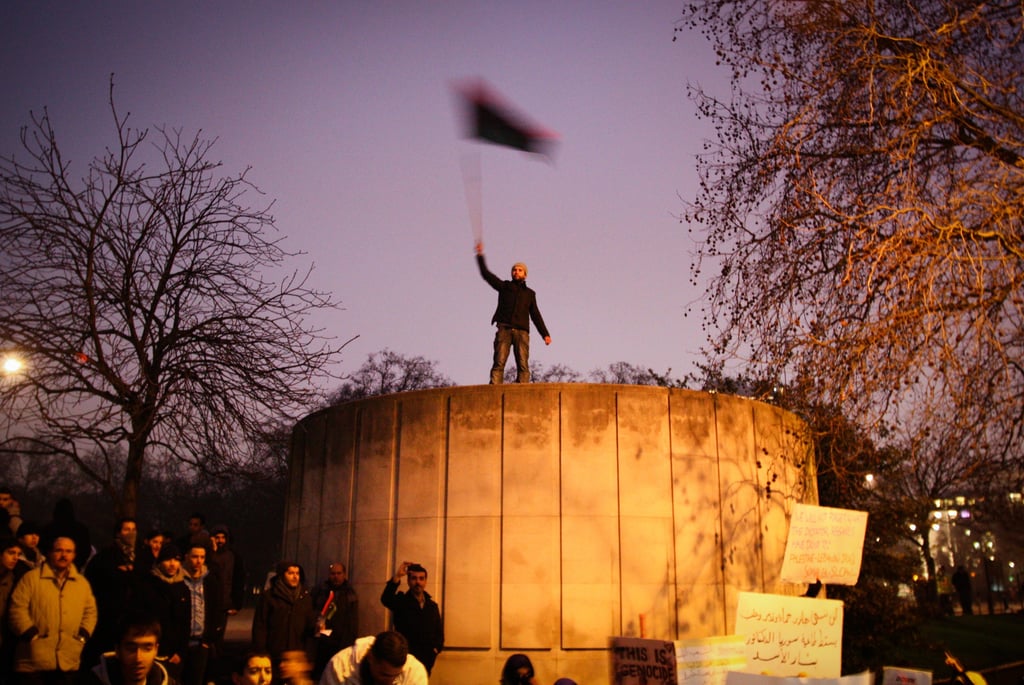Libya’s Uprising Photo Essay | Key Lessons in Visual Storytelling
Exploring how my Libya’s Uprising photo essay employs framing, sequencing, and storytelling to turn conflict images into powerful, empathetic narratives.
PHOTOGRAPHY


As a Libyan witnessing history unfold, I moved from documenting protests on London streets to bearing witness alongside my countrymen in Tunisian camps. I then crossed into Libya’s Nafusa mountains, camera in hand, to capture the grit of fighters in Nalut. Ultimately, I stood amid the exhilaration and relief of Tripoli and al-Khums, my hometown, residents reclaiming their country after Gaddafi’s escape farther east. Each chapter revealed the profound resilience of my people.
When news of Benghazi’s first protests reached me in February 2011, I was working a 9–5 office job in London. I continued to work, but now with headphones and Aljazeera Libya streaming constantly on my phone. When the protests hit the streets of London, I would race to the Libyan Embassy after work and document what I could. The air outside the embassy was thick with our chants as we brandished the red-black-green flag—our flag when we gained independence in 1951—voices rising in unison against four decades of oppression.
Standing among them, camera poised, I felt the shared hope.
By July, the conflict had consumed Libya’s eastern towns, and thousands fled across to Tunisian camps in Tataouine. Photographing their weary faces forced me, for the very first time, to confront the cost of war on the most vulnerable. In solidarity with my kin, I documented their resilience: families beneath UN tents, a pot of tea brewing in the middle, Libyan teachers offering a taste of normalcy to Libyan students, their faces all etched with trauma, silently asking, “When will we go home?”
These images became my promise to share their stories with the rest of the world.
Crossing the rugged Nafusa Mountains in late July, I found myself documenting fighters on the frontlines, their determination steadied by prayer and the notion of ousting a tyrant. Here, I focused on the body language of these young men—some barely twenty—eyes blazing with the conviction that they fought for their families’ futures. Many of them had never seen a gun in person, let alone held it and shot it before; however, there was a quiet camaraderie forged over weeks and months of standing shoulder to shoulder through the skirmishes, victories and setbacks.
As August waned, word spread across Libya’s frontlines: Gaddafi had abandoned his Tripoli stronghold, a blow to a 42-year regime. With the dictator’s grip loosening, rebel fighters surged forward, their spirits buoyed by the promise of liberty. I entered the capital amid a tide of jubilant Tripolitans, their voices lifting cries of “Allahu Akbar!” that wove through both the expansive boulevards and the narrow byways. In the heart of the city—the reborn Martyrs’ Square—throbbed with embraces and cheers, the ancient stones of the Old City echoing with the footsteps of families reclaiming their freedom. Fathers hoisted children aloft against the mosaic of flags, symbolising the dawn of a new Libya born from decades of oppression. As I trained my lens on Martyrs’ Square, I captured the fragile euphoria etched on every face, a hope that rose from the dust of conflict.
In al-Khums, my hometown, I witnessed quiet triumphs: shopfronts reopening, laughter echoing down alleys once silent with fear, and elders weeping for kin long silenced by Gaddafi’s ruthless vendettas. These scenes of reclamation stood in poignant contrast to the terror that had once gripped my people.
Through every rally in London, every whispered prayer in a refugee camp in Tataouine, every firefight in the Nafusa Hills, and every joyous outpouring in Tripoli, al-Khums and beyond, I aimed to do more than merely bear witness to history—I sought to honour the enduring spirit of my people, reminding us all that even amid the darkest shadows, the promise of victory shines on by the grace of God.
